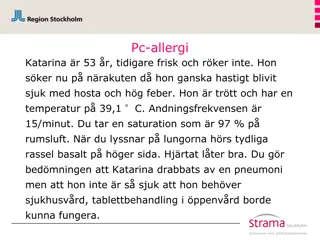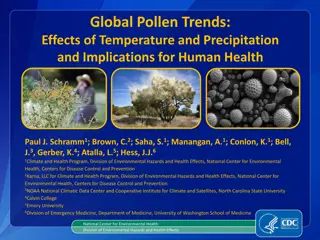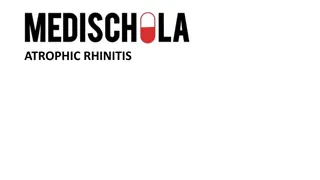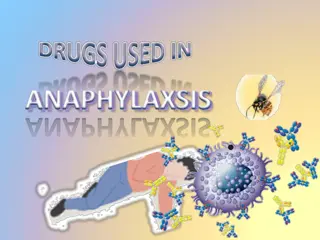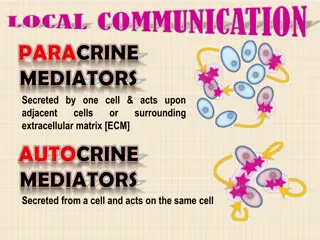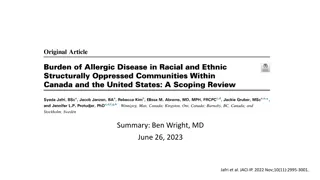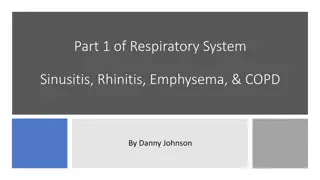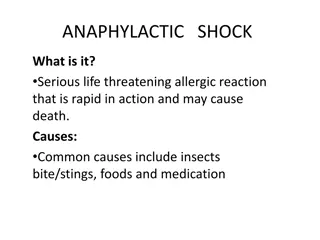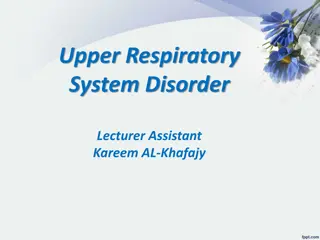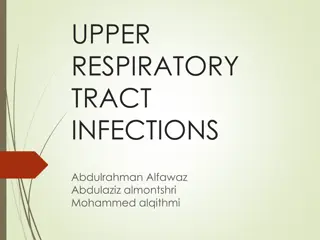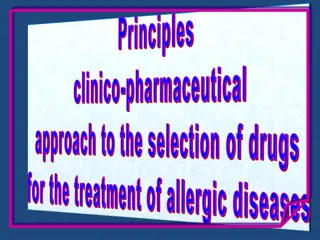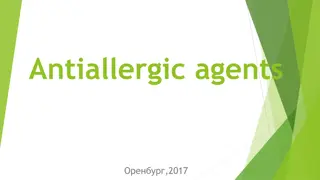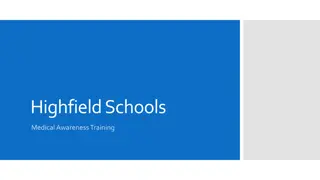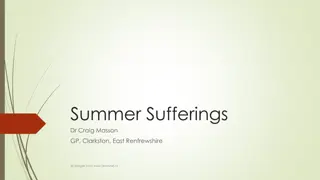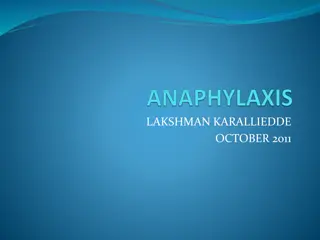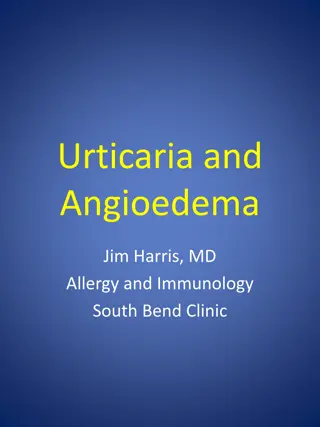Understanding Allergic Rhinitis: Causes, Symptoms, and Treatment
Allergic rhinitis is an atopic disease characterized by inflammation of the nasal mucosa due to hypersensitivity reactions. It commonly peaks in the second to fourth decades of life, with symptoms such as nasal irritation, sneezing, watery discharge, and more. Risk factors include family history, allergen exposure, cold weather, and psychological instability. Diagnosis involves clinical evaluation and allergic tests, while treatment options include nasal drops and sprays. Proper understanding and management of allergic rhinitis are essential for improving quality of life.
Download Presentation

Please find below an Image/Link to download the presentation.
The content on the website is provided AS IS for your information and personal use only. It may not be sold, licensed, or shared on other websites without obtaining consent from the author. Download presentation by click this link. If you encounter any issues during the download, it is possible that the publisher has removed the file from their server.
E N D
Presentation Transcript
Introduction. Introduction. An atopic disease caused by an inflammation of nasal mucosa as a result of hypersensitivity reaction type I.
Epidemiology Epidemiology Allergic Rhinitis is known to peak in the second to fourth decades of life and then gradually decline. According to data from the International Study for Asthma and Allergies in Childhood, 14.6% in the 13 to 14 year age group and 8.5% in the 6 to 7 year age group display rhinoconjunctivitis linked to allergic rhinitis. Seasonal allergic rhinitis seems to be more common in the pediatric age group, whereas chronic rhinitis is more prevalent in adults. symptoms of
Pathophysiology Pathophysiology With allergen exposure, allergen-specific immunoglobulin E (IgE) are produced which will then bind to IgE receptors on mast cells in the respiratory mucosa and to basophils in the peripheral blood. When the same allergen is encountered for the other time, the mast cells are activated releasing inflammatory mediators which bring about the symptoms of allergic rhinitis.
Risk factors Risk factors Family history. Contacts with allergens such as animal danders,dust particles,strong smells,smoke. Cold weather conditions. Psychological instability.
Clinical features Clinical features Nasal irritation Paroxysmal sneezing Watery nasal discharges Anosmia or hyposmia Headache Fever Mucous membrane appears pale with excessive mucoid or watery secretions. mucopurulent discharge in case of superinfection Evident mouth breathing
Evaluation Evaluation Anterior rhinoscopy which will show watery nasal discharge and nasal congestion. Diagnosis of allergic rhinitis is largely clinical, though in cases of chronicity, recurrence and poor response to Medication, allergic tests(Total/specific IgE test and skin prick test) can be done.
Treatment Treatment ephedrine (0.5% and 1%)nasal drop, Adults and children above 12years: 1 to 2drops in each nostril, not more than 4 times a day for 3-5days AND fluticasone propionate (50mcg/spray) nasal spray, Adults and adolescents more than 12years: 2sprays in each nostril 24 hourly as needed. children 4- 11years: 1spray in each nostril 24hourly as needed OR prednisolone (PO), 60mg 24hourly for 5days then taper down to 50mg 24 hourly for next 5days. Children: 1mg/kg 24hourly for 5days then taper down by half for the next 5days. AND loratadine (PO), Adults: 10mg 24hourly for 30days. Children 2-6years: 5mg 24hourly for 14days. Children above 6 years: 10mg 24 hourly for 14 days OR desloratadine (PO)Adults: 5mg 24hourly for 30days. Children 2-5 years: 1.25mg 24hourly for 14days. Children 6 to 12 years: 2.5mg 24hourly for 30days
Complications Complications Chronic Rhinosinusitis Otitis media Nasal polyps
Prevention Prevention Avoidance of allergens Early diagnosis and treatment


